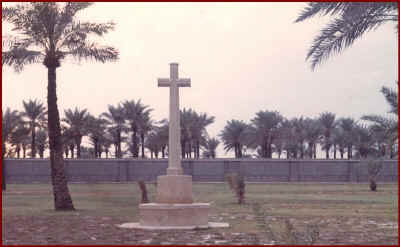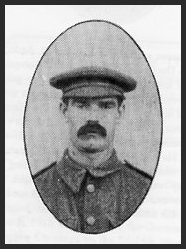|
LEAVING CHELTENHAM …………..and all that was dear |
A Tribute to Charles Herbert William (Willy) Pearce
|
No. 11116, Private Charles Herbert William Pearce 7th Battalion Gloucestershire Regiment |
|
Charles “Willy” Pearce was born in Cheltenham in 1889, the son of Joseph Walter and Salbrah Edith Pearce of Albert Place, Cheltenham, previously of 8, St Paul’s Parade, Cheltenham. Prior to the Great War he worked with his father as a house decorator and volunteered for service in August 1914. He was enlisted into the 7th Battalion Gloucestershire Regiment which had been formed at Horfield Barracks Bristol in August 1914 as part of “K1” of Kitchener’s Army. |
|
|
|
He had served in Gallipoli with his unit and survived the great battles against the Turks there. He later served in Mesopotamia (modern day Iraq) where he was killed in action on Saturday 10th February 1917 during the Battle of Kut-al-Amara. He is buried in the Amara Military Cemetery in Plot 29, Row B, Grave 1140. He was 27 years of age. “If I should die, think only this of me, that there’s some corner of a foreign field, that is forever England” CWGC Information Sheet on Amara Military Cemetery can be viewed here. Amara is a town on the left bank of the River Tigris some 520 kilometres from the sea. The cemetery is east of the town between the left bank of the river and the Chahaila Canal.
|

Amara War Cemetery. In 1933, all of the headstones were removed from this cemetery when it was discovered that salts in the soil were causing them to deteriorate. Instead a screen wall was erected with the names of those buried in the cemetery engraved upon it. |
|
The following notice was placed in the Gloucestershire Echo on 9th February 1918: Pearce – In ever loving memory of Pte Charles Herbert Willy Pearce, Glos Regt. Dearly beloved son of Joseph and Salbrah Pearce, killed in action in Mesopotamia on February 10th 1917, aged 27 years. The call was short, the shock severe To part with one we loved so dear His gentle voice his smiling face No one on Earth can fill his place From his sorrowing Father, Mother, Sisters, Frank and Harry
|
|
Potted History of 7th (Service) Battalion Gloucestershire Regiment |
|
The Battalion was formed at Horfield Barracks Bristol during August and September 1914 as part of Kitchener’s First New Army (K1) under the direction of Commanding Officer Lt Col R P Jordan, DSO, and Adjutant Lt JRLH Scott-Tucker, and moved to Tidworth, Hants, to commence training for active service. In January 1915 the Battalion moved to billets in Basingstoke for further training joining the 39th Infantry Brigade, part of 13th (Western) Division. In February and March 1915, the Division concentrated at Blackdown Camp, near Aldershot, to complete the training for war. The 39th Brigade was made of the 7th Battalion Gloucestershire Regiment, the 9th Battalion Royal Warwickshire Regiment, the 9th Battalion Worcestershire Regiment and 7th Battalion North Staffordshire Regiment.
On 7th June 1915, the Division received orders to prepare to move to the Mediterranean area of operations and between 13th and 19th June the Division sailed from Avonmouth to Alexandria. By 4 July, all units had moved to the port of Mudros on the island of Lemnos, in preparation for landing at Gallipoli. Between 6th and 17th July 1915 the Divisional infantry landed on Cape Helles and relieved the 29th Division. The Divisional infantry returned to Mudros at the end of the month, and the entire Division landed at ANZAC Cove between 3rd and 5th August 1915 to prepare for the attack on Sari Bair on 6th – 10th August 1915.
The Battalion were in action in The Battle of Sari Bair, The Battle of Russell’s Top and The Battle of Hill 60, at ANZAC. Soon afterwards they transferred from ANZAC to Suvla Bay. They were evacuated from Suvla on the 19th and 20th of December 1915, and after a weeks rest they moved to the Helles bridgehead. They were in action during the last Turkish attacks at Helles on the 7th of January 1916 and were evacuated from Helles on the 8th and 9th. The 13th Division concentrated at Port Said, holding forward posts in the Suez Canal defences. On the 12th of February 1916 the Division moved to Mesopotamia, to join the force being assembled near Sheikh Sa’ad for the relief of the besieged garrison at Kut al Amara. They joined the Tigris Corps on the 27th of March and were in action in the unsuccessful attempts to relieve Kut, where the Battalion were in action during The Battle of Kut al Amara, The capture of the Hai Salient, he capture of Dahra Bend and The passage of the Diyala, in the pursuit of the enemy towards Baghdad. Units of the Division were the first troops to enter Baghdad, when it fell on the 11 March 1917. The Division then joined “Marshall’s Column” and pushed north across Iraq, fighting at Delli ‘Abbas, Duqma, Nahr Kalis, crossing the ‘Adhaim on the 18 April and fighting at Shatt al ‘Adhaim. Later in the year they were in action in the Second and Third Actions of Jabal Hamrin and fought at Tuz Khurmatli the following April. By the 28th of May 1918, Divisional HQ had moved to Dawalib and remained there until the end of the war, enduring extreme summer temperatures. In July 1918, 39th Brigade was detached and joined the North Persia Force which was in Transcaspia by October 1918.
The Battalion was disbanded at Constantinople, Turkey on 2nd September 1919, personnel being transferred to 8th Battalion Ox & Bucks Light Infantry. |
| Home Page | Area Covered | War Memorials | Roll of Honour | Uncommemorated | Cemeteries | Investigations | Observations |
| Commemorations | Images | Facts and Figures | Victoria Crosses | The Book | Memorial Scroll | Links | Acknowledgements |
| Latest News | Timeline | VAD Hospitals | Site Map |
